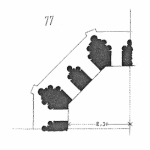
My wife says I am wasting my time trying to change reliability statistics, so I polled the www.linkedin.com Reliability Leadership…, ASQRRD, IEEE Reliability, “Biostatistics, and No MTBF groups. The polls claimed that “Life data, censored or not, is required to estimate MTBF, reliability function, failure rate function, or survivor function. TRUE? FALSE? or DON’T KNOW.” I am grateful for the responses.
[Read more…]









